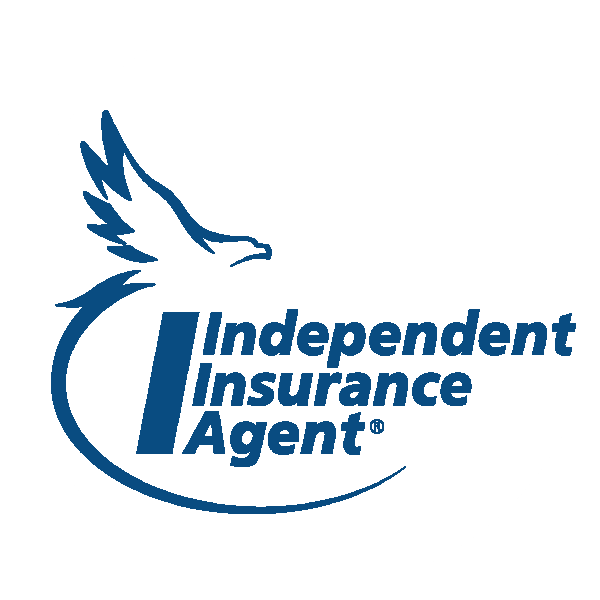Small Business Insurance
8:30am - 5:00pm Mon-Fri
Will Reply in 15min*
Top 3 Recommended Policies
Index
Why Small Business Insurance Matters in the Land of Enchantment
Core Policies Every New Mexico Small Business Should Consider
Specialized Coverage for New Mexico Industries
Understanding State Laws and Compliance
Cost Factors and Savings Strategies
From exuberant Santa Fe art galleries to high-tech labs in Albuquerque’s Innovation District, small businesses power New Mexico’s eclectic economy. According to the U.S. Small Business Administration, companies with fewer than 500 employees make up 99 percent of all enterprises in the state and employ more than 340,000 people. Protecting those livelihoods requires a clear understanding of the insurance landscape—what is required by law, what is prudent, and how to keep costs manageable.
Insurance often feels like an after-thought compared with marketing plans or inventory management, yet it can determine whether a minor mishap stays a blip on the ledger or escalates into a company-ending crisis. Wildfire seasons, monsoon floods, and a legal environment that awards sizable judgments all heighten risk in the Land of Enchantment. The following guide untangles the jargon and lays out practical steps so business owners can make well-grounded decisions.
This article breaks down core and specialized policies, statutory obligations, cost drivers, and money-saving tactics, using local examples whenever possible. By the final section, readers will know which questions to ask an agent, how to estimate the right coverage limits, and where to focus attention before signing on the dotted line.
Why Small Business Insurance Matters in the Land of Enchantment
The Economic Backbone of New Mexico
Small enterprises generate roughly 55 percent of the state’s private-sector payrolls, according to the New Mexico Economic Development Department. That economic weight means any disruption—whether from a building fire in Las Cruces or a liability lawsuit in Gallup—reverberates through local jobs, tax revenue, and community stability. Adequate insurance coverage keeps paychecks flowing and supplier invoices paid even when a sudden setback occurs.
Access to capital is another consideration. Lenders and investors routinely ask for proof of insurance before extending credit lines or venture funding. Demonstrating a robust risk-management strategy not only opens wallets but can secure better loan terms because the perceived risk of default is lower. In other words, insurance directly influences both growth potential and resilience. This is particularly crucial in New Mexico, where small businesses often operate on tight margins and depend heavily on local customer loyalty. A well-structured insurance policy can serve as a safety net, allowing entrepreneurs to focus on innovation and customer service rather than worrying about unforeseen financial burdens.
Unique Regional Risks
New Mexico’s high desert climate poses distinctive threats. Fast-moving wildfires scorched more than 900,000 acres in 2022 alone, while summer monsoons can drop several inches of rain in a single afternoon, overwhelming arroyo drainage systems. Those events translate into property damage claims, business-interruption losses, and liability suits if third-party property is harmed.
Furthermore, the state’s vibrant arts, outdoor recreation, and cultural tourism sectors attract millions of visitors each year. Heavy foot traffic increases slip-and-fall exposure, and the sheer diversity of visitors—often unfamiliar with local terrain—elevates the probability of accidents. For owners, acknowledging these geographic and demographic realities is the first step toward building a shield that truly fits the marketplace. Additionally, the interplay of cultural events and seasonal tourism can create peaks in business activity, making it essential for owners to have tailored insurance that covers both everyday operations and those bustling periods. This ensures that they can capitalize on opportunities without the looming threat of financial loss from unexpected incidents.
Moreover, New Mexico's unique cultural landscape brings its own set of challenges. With a rich tapestry of traditions and festivals, businesses often find themselves navigating complex regulations and liability issues associated with public events. For instance, food vendors at local fairs must adhere to stringent health codes, while artists displaying their work at outdoor markets face risks related to theft or damage. Understanding these nuances is crucial for small business owners, as it allows them to tailor their insurance policies to address specific risks associated with their operations, ultimately fostering a more secure and sustainable business environment

Core Policies Every New Mexico Small Business Should Consider
General Liability Insurance
General liability (GL) remains the bedrock of any commercial insurance portfolio. It protects against claims of bodily injury, property damage, and advertising injury. A visitor who trips over an uneven adobe threshold in Taos or a competitor who alleges trademark infringement could trigger this coverage. Industry surveys show that the average customer injury claim nationally tops $35,000, and legal defense alone can approach six figures.
Insurers commonly recommend a baseline limit of $1 million per occurrence and $2 million aggregate for New Mexico operations. Higher limits may be wise for businesses hosting large public events or selling products nationwide. Policy endorsements can add safeguards for liquor liability, rented premises, and additional insureds such as landlords or event organizers.
Commercial Property Insurance
Commercial property policies cover buildings, equipment, inventory, and occasionally outdoor fixtures like signage or patios. Replacement-cost protection is vital, especially for businesses housed in historic adobe structures where specialized materials drive repair expenses. According to data from the National Fire Protection Association, the average commercial fire causes $35,000 in direct property damage—figures that spike in older buildings lacking modern suppression systems.
Because wildfire is a recognized peril, owners should verify that their policy does not exclude losses arising from brush or forest fires. Installing defensible-space landscaping, metal roofing, and sprinkler systems may earn substantial premium credits from underwriters mindful of Western fire seasons.
Workers’ Compensation
New Mexico mandates workers’ compensation for any employer with three or more staff members, as well as for all construction businesses regardless of employee count. The coverage pays medical bills, rehabilitation costs, and partial wages following workplace injuries. State statistics reveal that strain injuries from repetitive motion and falls from elevation dominate claim frequency, particularly in the hospitality and construction sectors.
Premiums hinge on payroll size, experience modification factors, and industry class codes. Proactive safety programs, verified through annual audits, can shave up to 15 percent off rates. Participation in the state-approved Drug-Free Workplace program offers additional discounts and reduces the likelihood of costly impairment-related accidents.
Commercial Auto Coverage
Any vehicle titled to a business or used primarily for business requires commercial auto insurance. State law sets minimum liability limits at $25,000 per person and $50,000 per accident for bodily injury, plus $10,000 for property damage. Most insurers recommend at least 10 times those figures to shield company assets from lawsuit judgments that routinely exceed statutory minimums.
Because long stretches of rural highway connect hubs like Clovis, Roswell, and Farmington, accidents often occur at higher speeds, resulting in severe injuries and higher claim values. Comprehensive and collision coverage add protection for hailstorms—common in the eastern plains—and theft, which remains a concern near larger metro areas.
Professional Liability (Errors and Omissions)
Consultants, architects, therapists, and even marketing agencies face exposure from alleged professional mistakes. Errors and omissions (E&O) insurance pays legal defense and settlement costs when a client claims financial loss stemming from the provider’s negligence. In 2023, the average U.S. E&O claim settled for $150,000 before legal fees—a stark reminder of the risk service professionals shoulder.
Many firms pair E&O with cyber-liability coverage because a data breach can spark allegations of inadequate safeguards and professional negligence. For New Mexico’s expanding technology and film-production scenes, bundling the two coverages often delivers both cost efficiency and contractual compliance with studio or client requirements.
Specialized Coverage for New Mexico Industries
Tourism and Hospitality
The Tourism Department reported more than 40 million visitor trips to the state last year, pumping $7.2 billion into local coffers. Hotels, guiding companies, and event venues therefore need coverage addressing guest activities, liquor service, and property exposures unique to transient occupancy. Liquor liability is indispensable for establishments serving regional craft brews or New Mexican wine, as dram-shop statutes can hold vendors responsible for patrons’ actions once they leave the premises.
Guest-related losses often involve theft of personal property from locked rooms or tour vehicles. Innkeepers’ legal liability insurance and bailee coverage extend protection when a customer’s suitcase or art purchase disappears. The relatively modest premium outlay is dwarfed by potential brand damage from negative travel reviews if an incident is handled poorly.
Oil, Gas, and Mining Operations
New Mexico ranked second among U.S. states for crude-oil production in 2023, with the Permian Basin generating thousands of well-paid jobs. Extraction, however, carries significant environmental and workers’ safety risks. Specialized policies—pollution liability, blowout and cratering coverage, and contractor’s equipment insurance—address hazards that standard property or GL forms exclude.
Regulators require proof that operators can remediate spills and compensate injured workers. Meeting those obligations ahead of time streamlines permitting and reduces downtime. Large risk-retention groups serve this sector, but many small subcontractors find value in partnering with regional carriers that understand site-specific exposures such as sinkhole formation in the Carlsbad area.
Technology and Film Production
From the Los Alamos tech corridor to Netflix’s Albuquerque Studios, innovative enterprises demand equally forward-thinking insurance. Intellectual-property infringement, cyber extortion, and media liability are top concerns. A single lost external hard drive containing unreleased footage can delay production and cost millions in reshoots, making equipment floater and negative film coverage indispensable.
The state’s generous film incentive program attracts out-of-state crews who often rent local gear. Lessors usually insist on evidence of inland-marine insurance that follows equipment wherever filming occurs, including remote desert locations with limited security. Tailored policies safeguard against everything from dust damage to sudden thunderstorms that halt an outdoor shoot.
Understanding State Laws and Compliance
Workers’ Compensation Requirements
Failure to maintain mandatory workers’ compensation can trigger fines up to $1,000 per day of noncompliance, plus responsibility for all medical costs should an injury occur. The Workers’ Compensation Administration offers a self-insurance program for large employers able to demonstrate financial stability, but most small businesses opt for commercial carriers or the state’s assigned-risk pool.
Business owners must also post the official workers’ compensation notice in a conspicuous workplace location and submit annual payroll audits. Noncompliance jeopardizes not only finances but also licenses—especially critical in regulated industries like construction and healthcare.
Auto Liability Minimums
New Mexico enforces a “financial responsibility” law requiring either an auto insurance policy or surety bond. While the statutory minimum suffices for legal operation, it rarely meets contractual standards for commercial leases or fleet agreements. Many vendors and government clients insist on combined single limits of at least $1 million before awarding contracts.
Uninsured/underinsured motorist (UM/UIM) coverage, although not mandatory, is strongly urged because 21 percent of New Mexico drivers lack insurance according to the Insurance Research Council. If an uninsured party injures an employee during a delivery run, UM/UIM prevents the business from absorbing medical and wage-loss expenses out of pocket.

Cost Factors and Savings Strategies
What Determines Premiums
Several variables drive premium calculations: industry class, payroll, revenue, claim history, building construction type, security measures, and even credit score in some lines. For example, a metal-roofed building with a monitored sprinkler system may receive a 25 percent discount on property rates compared with a similar structure lacking those protections.
Geographic location also plays a role. Businesses in wildfire-prone mountain communities like Ruidoso might pay more than counterparts in downtown Albuquerque, while those near the Rio Grande floodplain face elevated flood-insurance costs. Understanding each rating factor empowers owners to target improvements with the highest return on investment.
Bundling and Discounts
Many carriers offer a business owner’s policy (BOP) that bundles general liability and property coverage, trimming administrative fees and unlocking package credits. Adding cyber, employment practices liability, or inland-marine coverage to a single carrier often triggers multi-line discounts of 5 to 15 percent.
Membership in professional associations—from the New Mexico Restaurant Association to local chambers of commerce—can yield group purchasing power. Safety-focused certifications, defensive-driving classes for employees, and consistent claim-free periods also lower experience-modification factors, directly reducing workers’ compensation and auto premiums.
Steps to Build an Insurance Plan
Risk Assessment
A thorough risk assessment begins with inventorying assets, mapping workflows, and evaluating worst-case scenarios. Many insurers provide free checklists or will dispatch loss-control specialists to walk through facilities. Identifying vulnerabilities—like outdated wiring or unsecured customer data—allows targeted coverage purchases instead of scattershot spending.
Documentation is essential. Photographs of equipment, receipts, and digital backups of records expedite claims settlement. For home-based businesses, a separate log distinguishing personal from business property eliminates ambiguity if a fire or theft occurs.
Comparing Providers
New Mexico boasts a competitive marketplace, from national carriers with comprehensive digital platforms to mutual insurers steeped in local knowledge. Solicit at least three quotes, ensuring each proposal lists identical coverage limits, deductibles, and endorsements for apples-to-apples comparison.
Financial strength ratings from A.M. Best or Standard & Poor’s offer insight into an insurer’s claims-paying ability. Meanwhile, customer satisfaction metrics—drawn from local Better Business Bureau files or national studies—expose service quality differences that pure price comparisons ignore.
Reviewing Policies Annually
Business operations rarely remain static. Annual revenue increases, new product lines, or changes in ownership structure can render yesterday’s policy inadequate. A yearly coverage review, timed two months before renewal, leaves room to negotiate terms, secure updated valuations, and adjust limits without rushing.
Claims trends within the company—and within the broader industry—should drive adjustments. A surge in cyber-crime claims, for instance, may justify bumping policy sub-limits or adding social engineering fraud endorsements even if no incident has yet struck the business directly.
Frequently Asked Questions
Is insurance mandatory?
At the state level, workers’ compensation (for qualifying employers) and minimum auto liability are compulsory. Other lines such as general liability or property insurance are not legally required but are often mandated by landlords, lenders, or client contracts.
How much does it cost?
Premiums vary widely; however, a typical New Mexico retail shop with fewer than ten employees might spend $500–$1,200 annually for a basic BOP, $800–$2,000 for workers’ compensation, and $1,000–$1,800 for a modest delivery van’s commercial auto policy. Riskier industries or higher revenue levels naturally lead to higher figures.
What happens if a business operates without coverage?
Beyond potential state fines, uninsured losses can devastate finances. A single slip-and-fall verdict can exceed $100,000, and property rebuilds after a fire frequently top half a million dollars. Without insurance, owners risk personal assets, brand reputation, and the livelihoods of their employees.
Final Thoughts
New Mexico offers entrepreneurs unparalleled cultural richness, a collaborative business spirit, and expanding opportunities in technology, energy, and tourism. Safeguarding those opportunities with a well-constructed insurance portfolio is neither burdensome nor optional—it is the cornerstone of sustainable growth. By understanding statutory requirements, recognizing unique regional hazards, and strategically layering coverage, small-business owners can focus on what they do best: innovating, creating jobs, and contributing to the vibrant tapestry that makes the Land of Enchantment truly special.
Request a Quote
Speak with a Small Business Insurance specialist today!
Get started today!
If you are preparing to start a valet service at your business, be sure to consider safety issues, legal requirements, and additional coverage options so that you can find the best possible coverage for your budget and needs.
Prefer to speak with an agent now?






